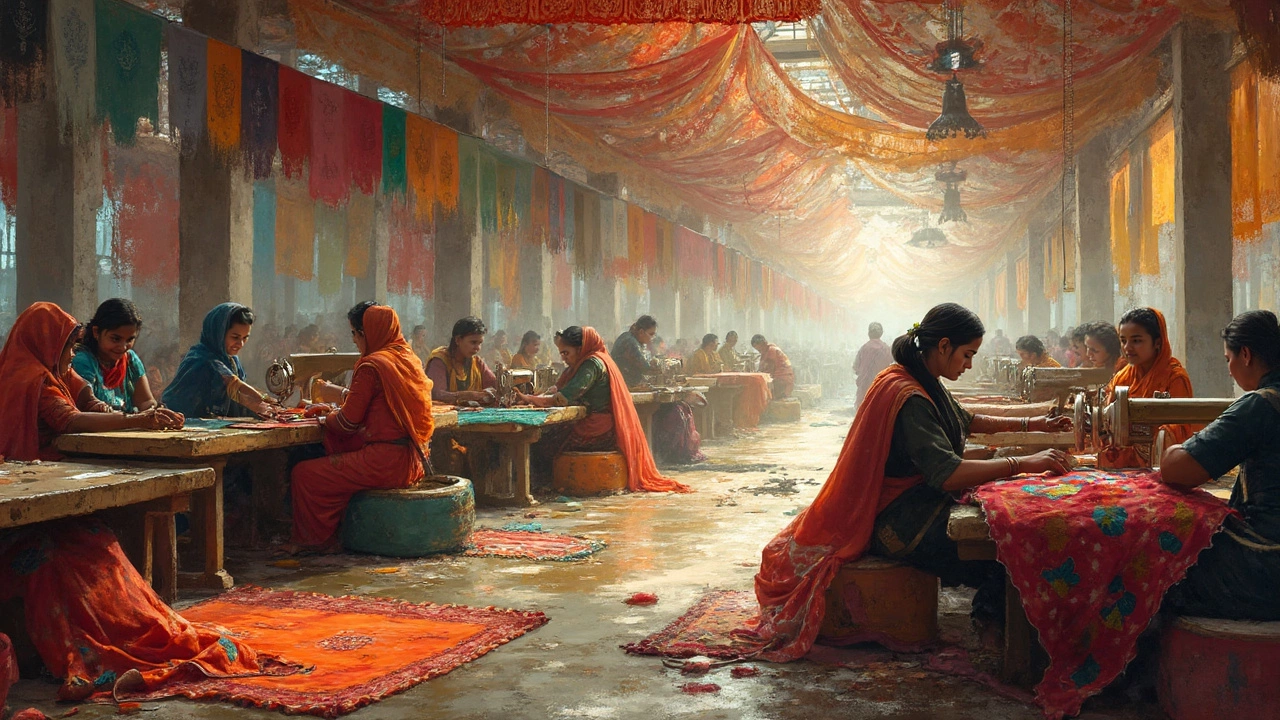Ever wondered what the real difference between a manufacturer and a factory is? You're not alone. It might seem like they’re just two words for the same thing, but there’s actually a bit more to it. If you're into small scale manufacturing, or just fascinated by how stuff gets made, understanding this can be a game changer.
Think of a manufacturer as the mastermind behind the whole production. It's like they're the project managers of the product world. They handle everything from designing the product to sourcing the right materials and logistics coordination. It's a big role, especially in making sure everything meets a certain quality standard.
Now, a factory is where the action happens - the hands-on part, if you will. It’s the place where raw materials get transformed into the final product. Picture machines buzzing, people at their stations, and assembly lines moving – that’s a factory for you. In small scale setups, this might even be a garage or a small rented space.
- Understanding Manufacturers and Factories
- The Role of a Manufacturer
- The Function of a Factory
- Why You Should Care About the Difference
- Practical Tips for Small Scale Manufacturers
Understanding Manufacturers and Factories
Diving into the world of production, the terms manufacturer and factory may seem interchangeable, but they play distinct roles. A clear grasp of their differences can really help you navigate the small scale manufacturing landscape effectively.
First off, let's talk about manufacturers. In the big picture, they’re the guys who oversee everything. From coming up with the design to putting all the parts together, manufacturers make sure it all comes together smoothly. They’re not just about churning out products; they’ve got a hand in every part of the process, ensuring quality and efficiency. Imagine a conductor leading an orchestra. Without them, the music might play, but it wouldn't sound nearly as good!
Moving on to factories, these places are like the engine room of a ship. They’re where the hands-on work gets done. Factories focus on the nuts and bolts of transforming raw materials into finished goods. Picture a bustling assembly line with workers and machines humming in harmony.
Here's a neat fact: Some factories operate 24/7 to keep up with demand. They don't stop, ensuring you get your products on time. This is especially important in today's world where timelines can make or break a business.
In simpler setups, especially in small scale manufacturing, a factory might just be a room with a few machines and handful of hardworking folks. But no matter the size, it's the heart of the production operation.
Understanding these roles not only helps in distinguishing between the two but also allows for better planning whether you’re just starting out or looking to optimize operations. The synergy between manufacturer and factory is essential for the smooth running of any production process.
The Role of a Manufacturer
So, what exactly does a manufacturer do? In simple terms, a manufacturer is like the conductor of an orchestra, orchestrating the entire process of bringing a product to life. They don’t just make things; they manage a complex web of tasks and responsibilities, ensuring that the product development process is as smooth as possible.
Creating the Product
It starts with designing. Manufacturers need a keen eye for design, collaborating closely with designers to create functional and appealing products. They're involved from the blueprint stage, making revisions, and planning every little detail. That's one reason why a well-designed product often stands out in the market.
Sourcing Materials
Next up is sourcing. This is no simple task, especially for small scale manufacturing. Manufacturers must find quality materials at the right price, balancing cost with quality. They often negotiate with suppliers and vet different sources to ensure a reliable supply chain. This isn't just about saving money; it's about maintaining a consistent product standard.
Overseeing Production
While the factory handles the actual assembly, manufacturers oversee the production timeline. They coordinate with the factory to ensure everything runs on schedule, meeting any specific needs or challenges that might pop up during the process. This is where strong project management skills come into play.
Ensuring Quality
Quality control is critical. Manufacturers implement strict quality checks to ensure the finished products meet certain standards. They are responsible for catching defects before the product hits the shelves, which helps maintain customer trust and brand reputation.
Handling Logistics
Finally, manufacturers tackle logistics. This involves planning how to get the finished products from the factory to the consumer—ensuring efficient packaging, dealing with distributors, and sometimes even managing direct sales. For small operations, this could mean personally handling deliveries or outsourcing to small logistics firms.
Industry Facts
Did you know that about 70% of manufacturing costs are determined by decisions made in the design and development phase? This fact highlights the manufacturer's influence in shaping the final production cost and ultimately, the price the consumer pays.

The Function of a Factory
What exactly happens inside a factory? It's a hub of activity where raw materials are transformed into finished products ready for the market. The process usually involves a series of steps to ensure the final product meets the necessary quality standards.
Physical Production of Goods
At its core, a factory's main role is to produce goods. From packaging to assembly lines, everything is designed to optimize efficiency and reduce costs. The assembly line, for instance, is a clever setup that allows each worker to focus on a specific task, speeding up the entire production process.
Types of Factories
Not all factories are the same. There are factories specialized in different types of manufacturing. For instance, textile factories focus on producing fabrics and garments while electronics factories deal with gadgets and devices. Whether it's small scale or big, each factory has its niche.
Impact of Technology
In recent years, technology has massively changed how factories operate. Automation and robotics are now widely used to increase efficiency and precision. This means factories can produce more without necessarily increasing the workforce, which is especially beneficial for small scale operations looking to scale up.
Here’s a quick look at some examples:
| Factory Type | Main Products |
|---|---|
| Textile Factory | Clothing and Fabrics |
| Electronics Factory | Smartphones and Gadgets |
| Automotive Factory | Vehicles and Parts |
In essence, understanding the function of a factory provides insight into the heart of production. Knowing this can help small scale manufacturers make informed decisions about where to focus their efforts, how to set up an efficient production line, and when it might be time to invest in new technology.
Why You Should Care About the Difference
Understanding the distinction between a manufacturer and a factory is more than just a trivia fact—it's a key piece of knowledge that can really impact your business decisions, especially in the small scale manufacturing scene. You might be wondering why it even matters. Let's dive into some reasons why.
Optimizing Production Processes
When you know the role each plays, you can optimize your processes better. For example, if you're a startup that focuses on creating a new gadget, aligning with a reliable manufacturer ensures that your design and supply chain are in check, while the factory focuses purely on efficient production.
Cost Efficiency
Understanding these roles also affects your wallet. Often, manufacturers can offer you insights or alternative materials that could save costs without compromising quality. Meanwhile, factories can work on reducing wastage, leading to cheaper production runs.
Quality Control
The dual approach allows for better quality control. The manufacturer sets standards and maintains oversight, while the factory sticks to processes that meet these criteria. This division can help maintain consistent quality, reducing product recalls or customer complaints.
Flexibility and Growth
When operations scale up, knowing who does what becomes vital. A manufacturer can handle design modifications or new product lines, while a factory might need to scale physical space and labor. Clear roles allow for flexible operations that can quickly adapt to changing demands.
Real-life Example
Take a look at some local businesses: a small pottery studio might design and craft their pieces (acting as both manufacturer and factory), but as demand grows, they could partner with a factory to produce simpler items while focusing on the artistic designs themselves. This helps them meet higher demand without compromising their unique style.
So, the next time you're looking to get your big idea off the ground, remember: knowing the difference is half the battle won. Taking the time to understand this can lead to smarter partnerships, streamlined processes, and ultimately, a more successful business.

Practical Tips for Small Scale Manufacturers
Diving into small scale manufacturing can be both exciting and a bit daunting. But don’t worry, with these straightforward tips, you’ll be on your way to smoother production processes.
1. Start Small, Think Big
It's tempting to go all out when you're starting, but keeping it manageable helps you focus on quality and efficiency. This approach lets you iron out glitches before scaling up. So, begin with a limited product line and gradually expand based on customer feedback and demand.
2. Build Strong Relationships with Suppliers
Your manufacturer status will benefit from reliable materials and resources. Establishing good ties with suppliers ensures you get the best deals and quality materials, which in turn keeps your products top-notch.
3. Streamline Production Processes
Efficient use of a factory space can significantly impact your bottom line. Organize your workspace to minimize the time and effort taken to move between tasks. Lean manufacturing principles can help here—reduce waste, save time, and improve productivity.
4. Prioritize Quality Over Quantity
Especially when you're small, a focus on quality can set you apart. Customers value products they can trust, and word-of-mouth is incredibly powerful for small businesses. Ensure every piece that leaves the factory aligns with your quality standards.
5. Stay Adaptable
The world of manufacturing is ever-evolving. Being adaptable to new technologies and processes can save you time and resources. Whether it’s adopting digital tools for design or incorporating sustainable practices, staying agile keeps you competitive.
6. Keep Costs in Check
Managing finances goes a long way. Track every expense, from materials to operational costs. This will help you find areas where you can cut costs without compromising on the product quality.
Bonus: Consider Tech Investments
The right tech can drastically improve your manufacturing process. Simple cloud-based tools for inventory or customer management can make a difference. A small upfront investment can pay off with saved time and increased sales down the line.
Remember, the journey from a manufacturer to a well-oiled factory machine is all about learning and adapting. Keep these tips in mind, and you’ll find the path a bit clearer and far more rewarding.
